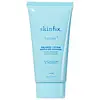What's inside
What's inside
 Key Ingredients
Key Ingredients

 Benefits
Benefits

 Concerns
Concerns

No concerns
 Ingredients Side-by-side
Ingredients Side-by-side

Water
Skin ConditioningGlycerin
HumectantSodium Cocoyl Isethionate
CleansingCocamidopropyl Hydroxysultaine
CleansingSodium Lauroyl Methyl Isethionate
CleansingSodium Methyl Cocoyl Taurate
CleansingCocamidopropyl Betaine
CleansingSodium Methyl Oleoyl Taurate
CleansingLauryl Glucoside
CleansingCoco-Glucoside
CleansingCoconut Acid
CleansingJojoba Oil/Macadamia Seed Oil Esters
Skin ConditioningSodium Chloride
MaskingSodium Isethionate
CleansingEctoin
Skin ConditioningSqualene
EmollientOligopeptide-1
Skin ConditioningOligopeptide-2
Skin ConditioningOligopeptide-3
Skin ConditioningHexapeptide-11
Skin ConditioningCeramide EOP
Skin ConditioningPropanediol
SolventHydroxyectoin
BufferingNiacinamide
SmoothingAmylopectin
Bacillus
Skin ConditioningFolic Acid
Skin ConditioningSodium Hyaluronate
HumectantPentylene Glycol
Skin ConditioningInulin
Skin ConditioningPhytosteryl Macadamiate
Skin ConditioningLecithin
EmollientAcetyl Glutamine
Skin ConditioningChamomilla Recutita Flower Extract
MaskingLithothamnion Calcareum Extract
Skin ConditioningLactic Acid
BufferingPhytosterols
Skin ConditioningAlpha-Glucan Oligosaccharide
CleansingSodium Lauroyl Lactylate
EmulsifyingTocopherol
AntioxidantSodium Benzoate
MaskingCaprylyl Glycol
EmollientPolyglutamic Acid
Skin ConditioningCeramide NP
Skin ConditioningCeramide AP
Skin ConditioningPhytosphingosine
Skin ConditioningCholesterol
EmollientCarbomer
Emulsion StabilisingCitric Acid
BufferingXanthan Gum
EmulsifyingPotassium Sorbate
PreservativeEthylhexylglycerin
Skin ConditioningPhenoxyethanol
PreservativeWater, Glycerin, Sodium Cocoyl Isethionate, Cocamidopropyl Hydroxysultaine, Sodium Lauroyl Methyl Isethionate, Sodium Methyl Cocoyl Taurate, Cocamidopropyl Betaine, Sodium Methyl Oleoyl Taurate, Lauryl Glucoside, Coco-Glucoside, Coconut Acid, Jojoba Oil/Macadamia Seed Oil Esters, Sodium Chloride, Sodium Isethionate, Ectoin, Squalene, Oligopeptide-1, Oligopeptide-2, Oligopeptide-3, Hexapeptide-11, Ceramide EOP, Propanediol, Hydroxyectoin, Niacinamide, Amylopectin, Bacillus, Folic Acid, Sodium Hyaluronate, Pentylene Glycol, Inulin, Phytosteryl Macadamiate, Lecithin, Acetyl Glutamine, Chamomilla Recutita Flower Extract, Lithothamnion Calcareum Extract, Lactic Acid, Phytosterols, Alpha-Glucan Oligosaccharide, Sodium Lauroyl Lactylate, Tocopherol, Sodium Benzoate, Caprylyl Glycol, Polyglutamic Acid, Ceramide NP, Ceramide AP, Phytosphingosine, Cholesterol, Carbomer, Citric Acid, Xanthan Gum, Potassium Sorbate, Ethylhexylglycerin, Phenoxyethanol
Avena Sativa Seed Water 77%
SolventButylene Glycol
HumectantGlycerin
Humectant2,3-Butanediol
Humectant1,2-Hexanediol
Skin ConditioningWater
Skin ConditioningAmmonium Acryloyldimethyltaurate/Vp Copolymer
Squalane
EmollientHydroxyacetophenone
AntioxidantCarbomer
Emulsion StabilisingDipotassium Glycyrrhizate
HumectantPanthenol
Skin ConditioningTromethamine
BufferingEthylhexylglycerin
Skin ConditioningInulin Lauryl Carbamate
Emulsion StabilisingSodium Surfactin
CleansingBeta-Glucan
Skin ConditioningAvena Sativa Seed Water 77%, Butylene Glycol, Glycerin, 2,3-Butanediol, 1,2-Hexanediol, Water, Ammonium Acryloyldimethyltaurate/Vp Copolymer, Squalane, Hydroxyacetophenone, Carbomer, Dipotassium Glycyrrhizate, Panthenol, Tromethamine, Ethylhexylglycerin, Inulin Lauryl Carbamate, Sodium Surfactin, Beta-Glucan
 Reviews
Reviews

Ingredients Explained
These ingredients are found in both products.
Ingredients higher up in an ingredient list are typically present in a larger amount.
Carbomer is a polymer of acrylic acid. Its main role is to create a gel consistency.
A high amount of carbomer can cause pilling or balling up of products. Don't worry, most products contain 1% or less of carbomer.
Ethylhexylglycerin (we can't pronounce this either) is commonly used as a preservative and skin softener. It is derived from glyceryl.
You might see Ethylhexylglycerin often paired with other preservatives such as phenoxyethanol. Ethylhexylglycerin has been found to increase the effectiveness of these other preservatives.
Glycerin is already naturally found in your skin. It helps moisturize and protect your skin.
A study from 2016 found glycerin to be more effective as a humectant than AHAs and hyaluronic acid.
As a humectant, it helps the skin stay hydrated by pulling moisture to your skin. The low molecular weight of glycerin allows it to pull moisture into the deeper layers of your skin.
Hydrated skin improves your skin barrier; Your skin barrier helps protect against irritants and bacteria.
Glycerin has also been found to have antimicrobial and antiviral properties. Due to these properties, glycerin is often used in wound and burn treatments.
In cosmetics, glycerin is usually derived from plants such as soybean or palm. However, it can also be sourced from animals, such as tallow or animal fat.
This ingredient is organic, colorless, odorless, and non-toxic.
Glycerin is the name for this ingredient in American English. British English uses Glycerol/Glycerine.
Learn more about GlycerinWater. It's the most common cosmetic ingredient of all. You'll usually see it at the top of ingredient lists, meaning that it makes up the largest part of the product.
So why is it so popular? Water most often acts as a solvent - this means that it helps dissolve other ingredients into the formulation.
You'll also recognize water as that liquid we all need to stay alive. If you see this, drink a glass of water. Stay hydrated!
Learn more about Water